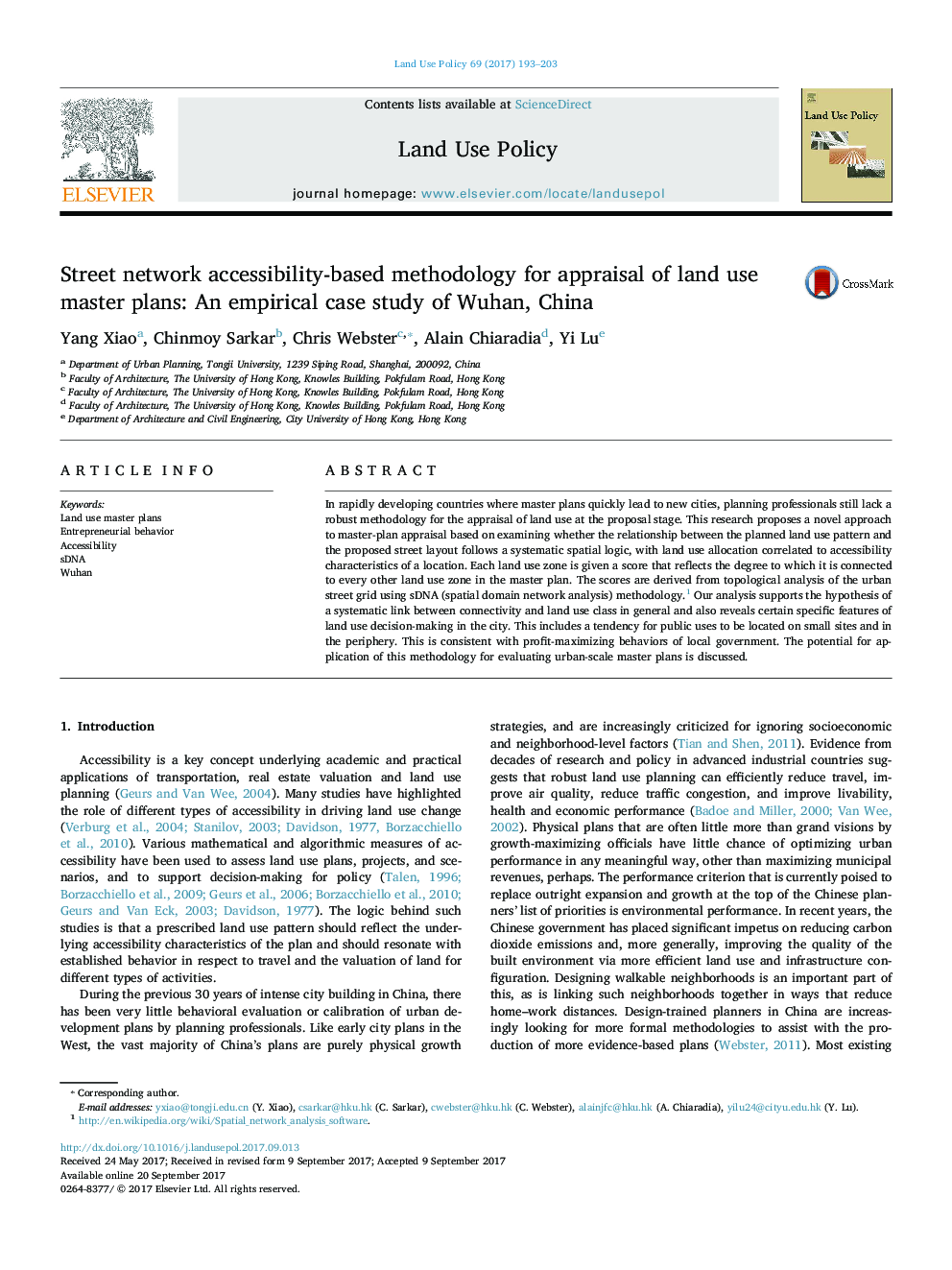| Article ID | Journal | Published Year | Pages | File Type |
|---|---|---|---|---|
| 6460347 | Land Use Policy | 2017 | 11 Pages |
In rapidly developing countries where master plans quickly lead to new cities, planning professionals still lack a robust methodology for the appraisal of land use at the proposal stage. This research proposes a novel approach to master-plan appraisal based on examining whether the relationship between the planned land use pattern and the proposed street layout follows a systematic spatial logic, with land use allocation correlated to accessibility characteristics of a location. Each land use zone is given a score that reflects the degree to which it is connected to every other land use zone in the master plan. The scores are derived from topological analysis of the urban street grid using sDNA (spatial domain network analysis) methodology.1 Our analysis supports the hypothesis of a systematic link between connectivity and land use class in general and also reveals certain specific features of land use decision-making in the city. This includes a tendency for public uses to be located on small sites and in the periphery. This is consistent with profit-maximizing behaviors of local government. The potential for application of this methodology for evaluating urban-scale master plans is discussed.
